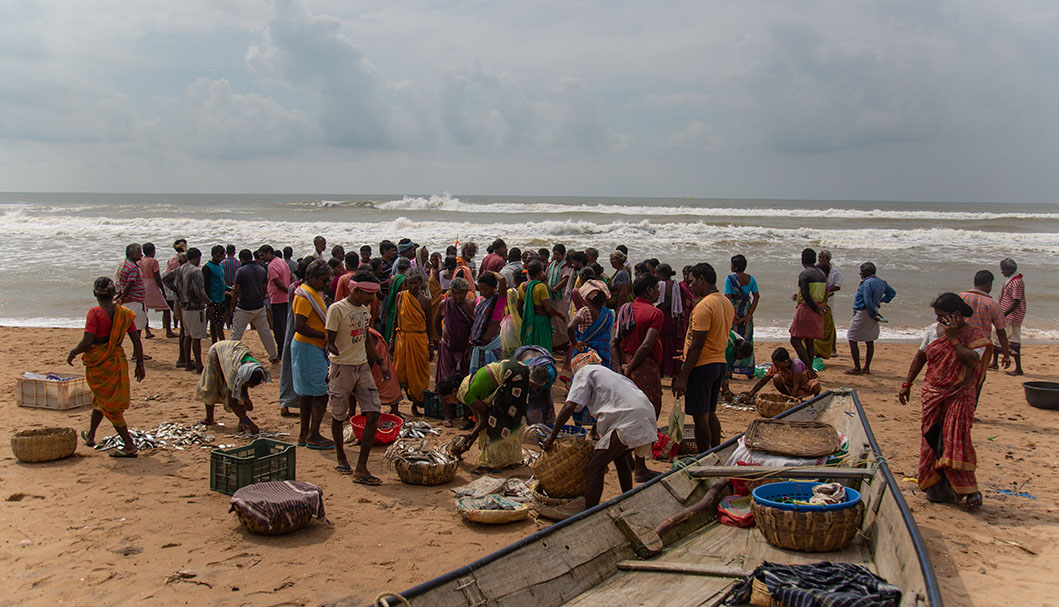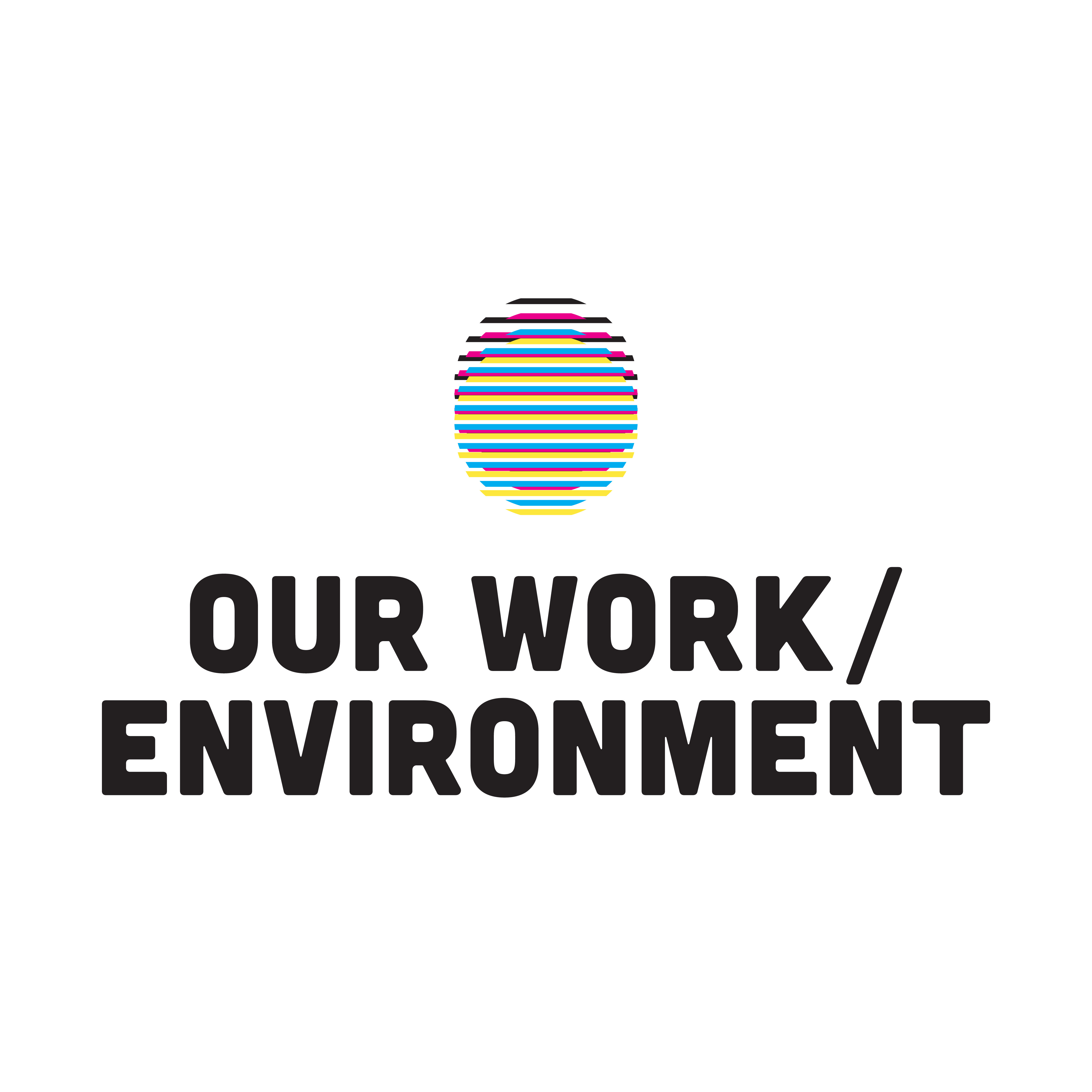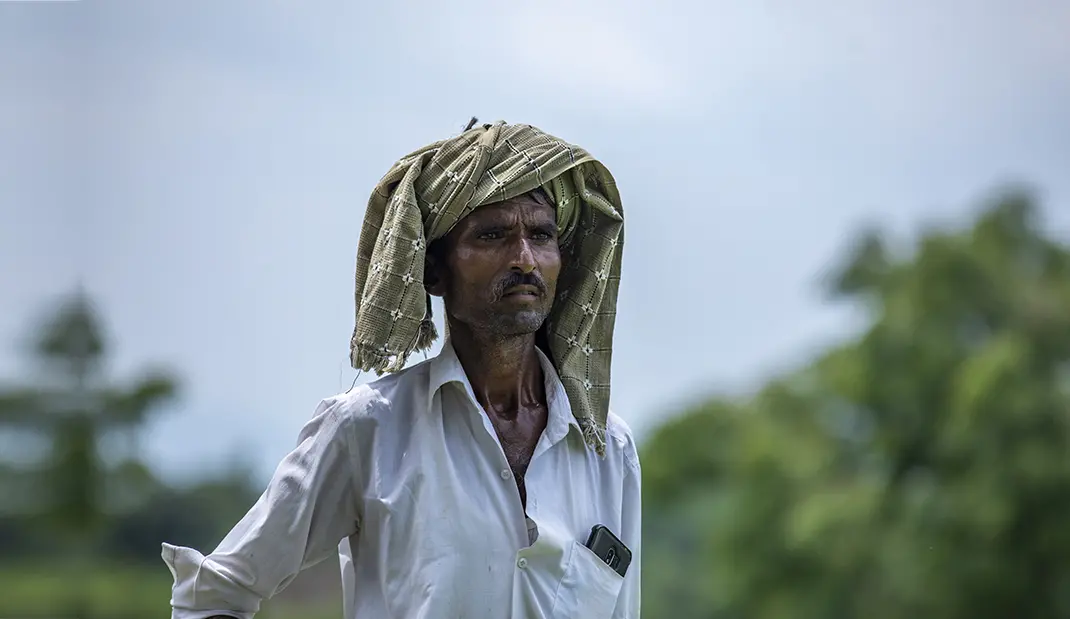
Early summers, heatwaves, erratic monsoons and disease combine to shrink already slim pickings, forcing many farmers to migrate even more for work.
On an afternoon in August, Amritlal Patel stood in the courtyard of his mud-and-stone house watching the rain pour. The roof of his house in Mayar village, Rajasthan, was barely held together by hundred-year-old wooden square columns rising from the ground.
Amritlal looked relieved. The rain meant he might still have a chance to earn back the thousands of rupees he spent sowing his summer crops a month ago on his small farm. His soybean and maize were on the brink of death due to a lack of rainfall. The year had already been bad: an unprecedented heatwave in March stunted his wheat crop, while his spring crop of mung bean was hit by yellow mosaic, a disease that is likely spreading fast due to climate change.
The rain also meant that Amritlal, who is in his late forties, would get to spend some more time in his village with his family.

As a nonprofit journalism organization, we depend on your support to fund more than 170 reporting projects every year on critical global and local issues. Donate any amount today to become a Pulitzer Center Champion and receive exclusive benefits!
For over three decades, Amritlal has travelled from his home and farm to cities for work. The small amount of land he owns isn’t enough to provide for his family of seven through the year. It’s a regular cycle for small farmers across India, who migrate outside of the sowing and harvesting seasons to generate additional income.
A bad or ruined crop, however, means a farmer like Amritlal has to make the trip much earlier than planned, and spend much more time away.
“Heat and lack of rainfall will be the doom of farmers like me,” he said, leaning on a pillar while watching his wife work through the hair of the youngest of their three children. The family has seen this story unfolding several times. A loss on the farm means they will not have Amritlal around for a few months.
Extreme weather events like heatwaves and unseasonal rains occurred on 88% of the days in the first nine months of 2022, affecting 1.8 million hectares of India’s crop area. Because over 50% of India’s net cultivated area is rainfed and accounts for nearly 40% of the total food production, this crisis also impacts consumers and India’s economy.
But years like 2022 have become more frequent and much worse due to climate change caused by global warming. Tropical countries like India are worst affected by these changes, as a large proportion of the population depends on outdoor activities like agriculture.
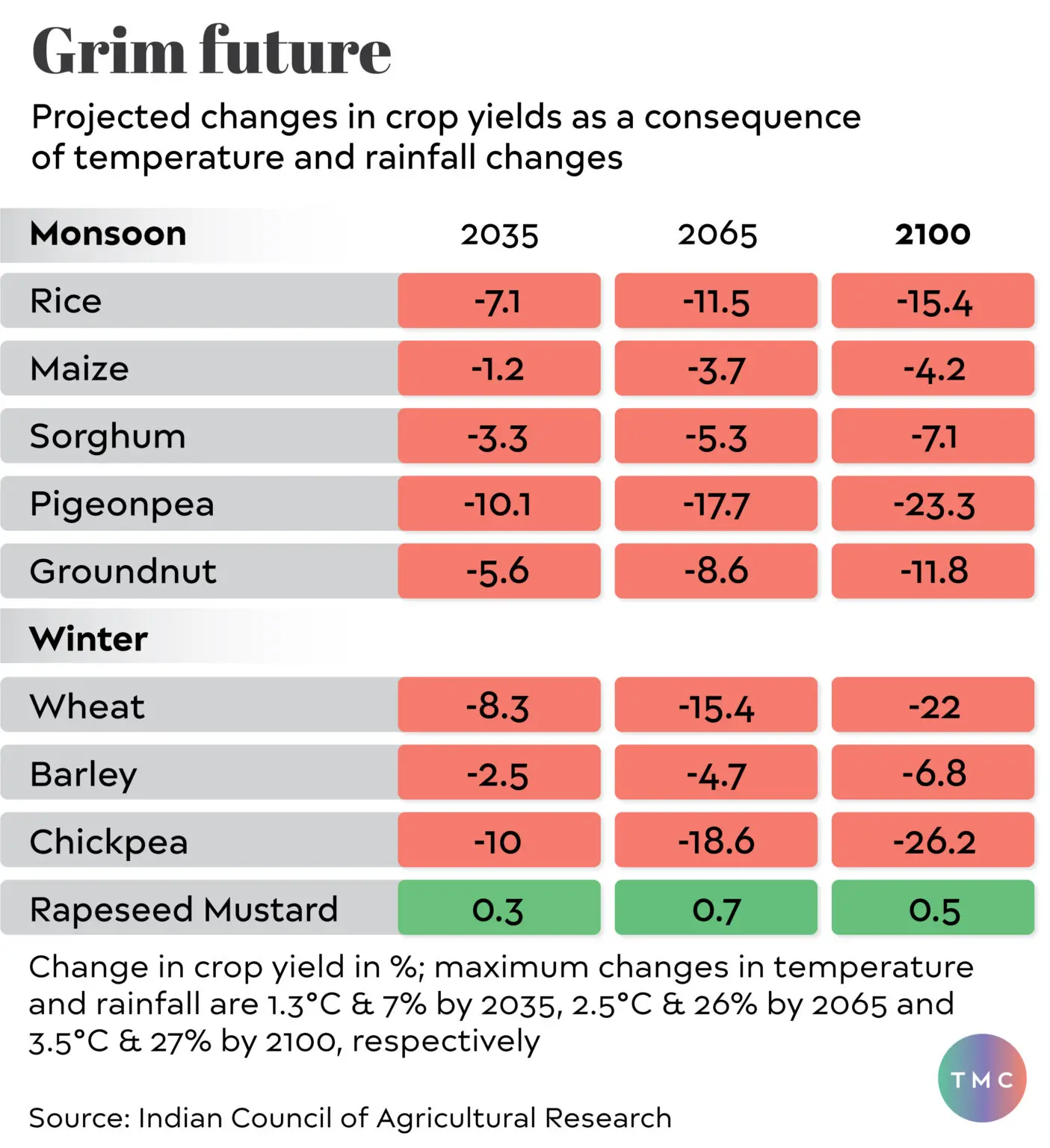
Smallholder farmers in India, who are already dealing with perennial issues like small land holdings, lack of irrigation and financing, and poor connectivity to markets, are worse off due to the effects of climate change. Developing countries like India need to find ways to adapt to such impacts of climate change on agriculture and ensure that the incomes of millions of farmers like Amritlal are protected.
On 8 November, at the UN’s ongoing COP27 climate conference in Egypt, the conference presidency announced the first-of-its-kind Adaptation Agenda, with 30 actions that need to be taken by the end of the decade to help people across the world be resilient to the changing climate. This includes the agenda to “transition to climate resilient, sustainable agriculture that can increase yields by 17% and reduce farm level greenhouse gas (GHG) emissions by 21%, without expanding agricultural frontiers, and while improving livelihoods including of smallholder farmers."
But the effort is hobbled by a poor understanding of the kind of losses that farmers are dealing with, and their adaptation strategies like migration. While there are some estimates of migration caused by sudden-onset climate impacts like floods, there are only very limited ones for people who undertake unplanned migration because of so-called “slow-onset” changes like erratic monsoons and rising summer heat.
To trace how the changes in weather are impacting farmers’ incomes, and how they’re coping with these changes, we tracked Amritlal’s crop cycles for all of 2022, up until October.
Winter
It was the end of March this year. Amritlal, clad in a white shirt and pleated dark brown pants, tied his towel on his head like a turban to stave off the sun. He picked up a palmful of freshly threshed wheat. It looked shrivelled, more towards brown than golden in colour and light in weight. Amritlal knew this grain was bad news.
It was India’s hottest March ever, leading to a heatwave, which hit the growth of wheat hard. It created national news headlines, forcing the government to put an anticipatory export ban on wheat.
At the farm, after Amritlal and the labourers he had employed packed the harvested wheat in large jute bags, he began counting them.
Amritlal’s farm plots—a total of five bighas, or one and a half acres—are fragmented. About two bighas lie on the periphery of a pond that is located on the east side of his village; the rest are located about a km away. The age-old tradition of fathers distributing their farmland among sons is one of the reasons why the average landholding has been reducing in India. A small farm means a small yield, and less produce reduces a farmer’s capacity to negotiate for a fair price. As a result, most small farmers end up selling their produce to a broker at a reduced price. Due to all of these reasons, fragmented and small land holdings also reduce farmers’ adaptive capacity to climate change.
The harvest came to 14 bags—about 4-6 bags fewer than his usual yield. He decided not to sell his wheat when he saw the low prices the middleman was offering due to the grain’s poor quality.
Even if he would have sold his wheat at Rs 2,000 per quintal, close to the government’s minimum support price, Amritlal would have made roughly Rs 24,000 on the whole produce. That’s about Rs 12,000 less than what he usually earns by selling 18-20 bags of wheat. Amritlal kept the wheat to feed his family of seven. Barley was the only crop in his field that did not see any major decline in production.
This was the story with all farmers in Mayar village. “Four-five years ago, I have got a yield of 22-24 quintals from a one-and-a-quarter bigha of my land; last year I got only 15-16 quintals because of the heatwave,” said Heeralal Vaishnav, Amritlal’s neighbour.
This is a reality that Indian farmers might have to live with in the future. According to the Indian Agricultural Research Institute, every single degree Celsius increase in temperature reduces wheat production by 4-5 million tonnes.
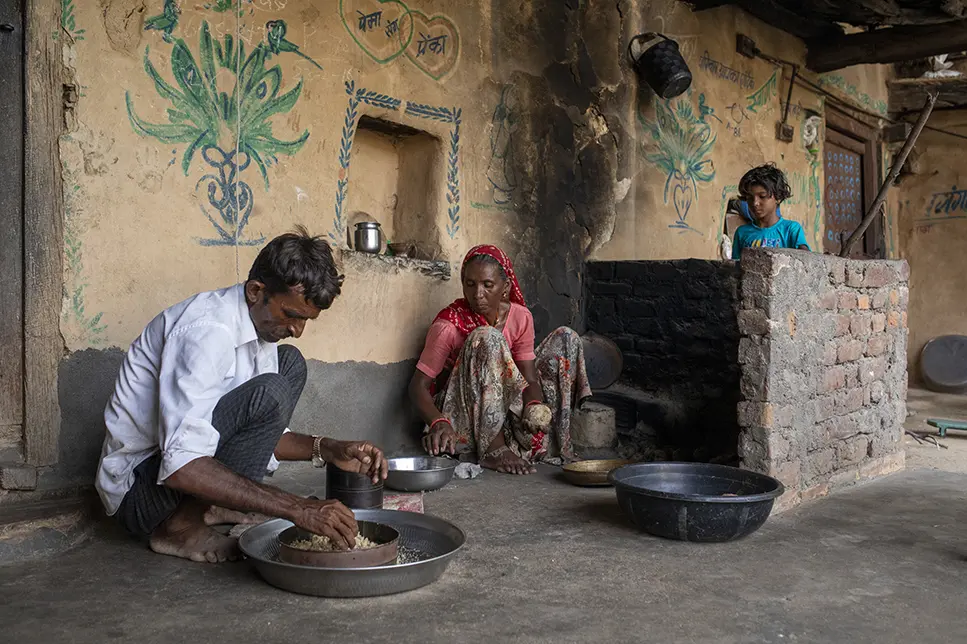
Spring to summer
Just after losing money on winter crops due to the March heatwave, Amritlal tried his luck with a spring crop before the monsoon. Between March and June, he sowed mung bean in little more than half of his land and prayed that it would survive. But as the mung entered the flowering stage, it caught yellow mosaic, a viral disease that leads to plant leaves turning yellow and killing the plant. The spread of this disease is likely increasing due to the changing climate. Amritlal does not have access to government-sponsored scientific or technical services to help him deal with pests and diseases because agriculture extension services in India are severely understaffed, unable to reach the country’s millions of farmers.
On the advice of a local seed dealer Amritlal sprayed pesticide on the mung, but still lost most of it. To reduce his losses, Amritlal decided to not hire labour and harvested the crop himself. But only 3 quintals of mung could be saved, almost half of his average yield in a normal year. He sold that for Rs 18,000 to middlemen. After accounting for his input cost, he had made just Rs 8,000 with this crop—far less than the Rs 25,000 or so he would have made if his crop had survived.
“The problem of pests and diseases is becoming big in the area. We usually hear about solutions from other farmers, sometimes they work, sometimes they don’t,” said Ramlal Meena, sitting on a jute charpoy near Amritlal’s house, where he and other farmers were discussing the kind of weather shocks they are dealing with.
Ramlal Meena and Heeralal Vaishnav lost parts of their mung bean to the disease too. Both of them cultivate their farms—five bighas and four bighas, respectively—in the village while their sons live in different cities of Gujarat and Maharashtra doing odd jobs to send money home. Families that have more sons to send off to cities fare better compared to the ones where the primary breadwinner of the household has to migrate, as is the case with Amritlal.
“There is no zaid anymore,” Amritlal said, standing in a corner; zaid refers to the spring/summer crop, a short season in Indian farming before the monsoon, or kharif, crop. “This year summer started in March, there is barely any time between winter and summer.”
Not only is the summer setting in early, but the heat in the summer months is also reaching new peaks in several parts of India, causing a health concern.
Working outdoors in peak summer is becoming dangerous for Indian farmers. A decade ago, Amritlal would go to the farm at 6 am and work till 10 am, sometimes 11 am. “But now you cannot stand on the field after 9 am in the morning in summer months,” he said. “In the evening also it is only possible to step out post five.”
During summer months, farmers in Amritlal’s village work on their farms at temperatures close to 40 degrees Celsius. Scientists have found that the early onset of summer and peaking temperatures are not only impacting Amritlal’s spring crops but can also seriously impact his health and productivity.
As heat and humidity levels rise, the hours to work outdoors safely will shrink, leading to significant labour losses worldwide. Outdoor workers in India are already dealing with unsafe temperatures coupled with humidity, leading to a loss in labour hours. The country will be among the worst affected, found Luke A. Parson, an American researcher who has been studying the relationship between heat and labour productivity.
In a study published in Nature Communications last year, Parson found that India showed the largest heat exposure impacts on heavy labour among South Asian countries. The country lost more than 101 billion hours per year. The study projected that India, China, Pakistan and Indonesia—where larger fractions of the population work outdoors—will experience the biggest losses overall.
Indian workers who work under heat stress, including those in agriculture, have 2.5x higher chances of developing kidney stones, said Vidhya Venugopal, an Indian scientist who has been studying the relationships between heat, workload and dehydration at the Sri Ramachandra Institute in Tamil Nadu.
The impact of this is visible on the ground. Bhagwati Lal, another farmer in Mayar village, relates an instance: One day this summer while working on his farm, he felt dizzy. He splashed some water on his face and sat under a tree on one side of his farm; a few minutes later, he vomited. Bhagwati Lal felt sapped for the next three-four days and kept resting, he could not tend to his farm or go to the city to do his regular wage work.
The choice becomes one of working fewer hours with a productivity loss or risking an even greater loss of time to dehydration and sunstroke.
Monsoon
After his mung bean crop failed, Amritlal looked up to the monsoon crop. He spread about 40 kg of soybean seeds in two bighas of his land and sowed maize in the remaining three bighas. The monsoon, which usually arrives in early June, was delayed by two weeks. One bigha’s soybean did not germinate at all.
After some showers in late June, there was no rain in July. It was only at the beginning of August that it rained in the afternoon—the rain he watched standing in his courtyard when I met him. But the rain lasted just 30 minutes. “This much rain does nothing for the crops, but I can only hope that it will rain again soon,” he said.
The rest of August ran almost dry, barring a couple of showers in the last week. Then, it rained way too much in September, when the monsoon was on its last leg.
Then he—like many farmers across the country—suffered losses due to unseasonal rains in early October. Rice, soybean, pulses, millet and cotton were among the crops that were ready to be harvested when the sudden unseasonal rains started. Uttar Pradesh, the second largest paddy producer state, received 500% more rainfall in the first 10 days of October. The central government is waiting on damage assessment reports from all the affected states to estimate the extent of the damage.
Eventually, one bigha of soybean got him 5-6 quintals of produce. He sold it to the middlemen for about Rs 5,000 per quintal and made about Rs 30,000. The one bigha of soybean that never sprouted was a missed opportunity to earn another Rs 30,000.
“The weather does not support farmers. There is no way to know when it will rain and how much,” Amritlal said.
The rain also destroyed his maize crop. “We just harvested what was left,” Amritlal told me over the phone. He earned about Rs 7,500 with what he harvested instead of the Rs 25,000 he expected, another loss of 70%.
The Indian monsoon exhibits huge variability across regions and years. Now these fluctuations have intensified due to climate change, said Roxy Mathew Koll, a scientist with the Indian Institute of Tropical Meteorology who has spent two decades studying the monsoon. In June this year, when the monsoon was supposed to start, northwestern and northern states witnessed dry conditions and a delay in the rains, affecting agriculture in the region.
Widespread extreme rainfall events have seen a threefold increase across India—particularly over parts of Western Ghats, central India and northeast India. At the same time, the total amount of rainfall has decreased over many regions, particularly in central and north India. This has a huge impact on the water and agricultural security of the country, he added.
The rising heat can be blamed for these changes. As the air gets warmer, it can hold more moisture—and for a longer time, which results in prolonged dry periods with short, intermittent spells of extreme rain.
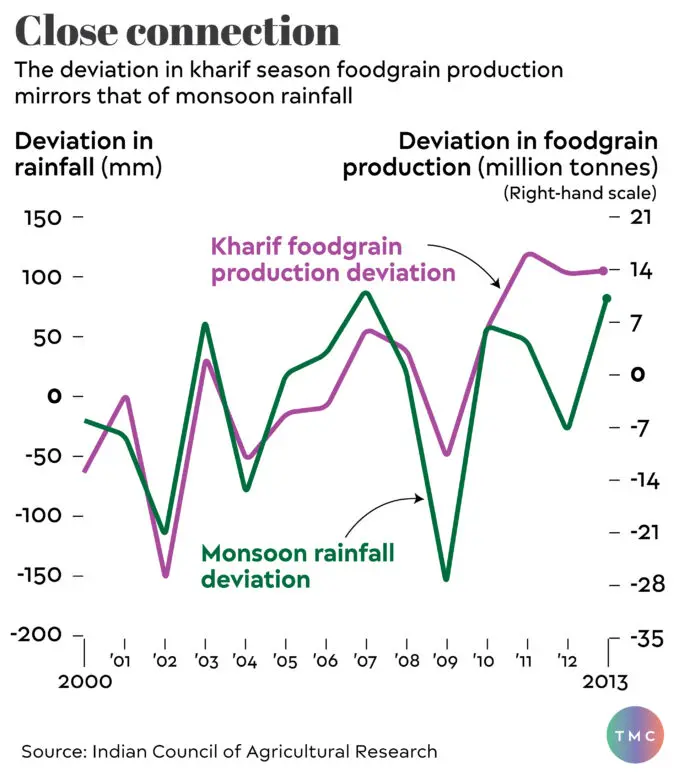
After facing crop losses due to uncertain weather throughout the year so far, Amritlal’s last big hope is the winter crop of wheat and barley.
The October rains have already delayed the sowing. This means that the crop will be ready only by March-end or April next year and he is dreading another heatwave like the one this March that damaged his wheat crop.
When there isn’t a major weather shock, Amritlal makes about Rs 150,000 in a year by cultivating six to seven crops, or an average of just Rs 12,000 a month for hard outdoor work. But in 2022, he lost at least Rs 60,000 due to crop failures caused by erratic weather, about 40% of what he makes in a normal year.
The expenses of nearly 70% of India’s 90 million agricultural households are more than their income. This income gap pushes farmers into debt traps, coerces them into selling their land and compels them to migrate to cities for jobs.
Migration as last resort
One summer evening, 30 years ago, when Amritlal was 16 years old, he packed two sets of clothes and some food in an old plastic bag. He was leaving his village for the first time, with his brother-in-law, to go to Ahmedabad, which held the promise of odd jobs for people coming from rural areas from all parts of the country.
A jeep dropped them on a highway, where they joined other migrants from surrounding villages. Together they crowded on to the back of a truck and left for the city. The journey took 12 hours.
Amritlal remembers that he could not sleep the entire journey. “I kept looking at the sky,” he said. “Mostly I was excited that I was going to see a world outside my village but every time I would close my eyes, I would feel nervous.”
For farmers and farm workers, migration isn’t an easy choice. They need money for travel—which often limits their range of migration—and a network of known people who would introduce them to jobs in the cities and help them with a place to stay.
Amritlal’s brother-in-law helped him find a job as a helper at a tea stall in Ahmedabad. Over the following years, he would spend five to six months every year doing such odd jobs, until 2002 when he started his own tea stall in Surat.
Mounted upon a rented iron cart with a thin metal roof, and located along a busy highway, the tea stall has become a primary source of income for Amritlal and his younger brother over the last decade. On average, after paying the rent for the room where they live, the rent for the cart, wages to a helper and expenses on ingredients and biscuits, they are left with about Rs 50,000 a month, which they split equally.
But this additional income comes at a cost. The dingy room that Amritlal rents is on the outskirts of the city and proper meals are a dream; he just cooks for sustenance and works 14-15 hours a day. “In summer, standing at the tea stall near the stove makes me feel like my skin is burning. During the night, the room without any ventilation stays so hot that I just keep twisting and turning until the sun comes up,” he said.
“When I lose money on agriculture, income from the tea stall supports my family,” Amritlal said. He divides his year between working his fields in the village and the tea stall in Surat. Usually, he goes to Surat twice a year and stays for two to three months. But his frequency of travel depends on the health of his crops. “Now, whenever there is a big loss in any crop, I can’t think of anything but to leave for Surat and focus my attention on the stall.”
With the regular income from the stall, Amritlal has been able to get a new brick-and-cement house constructed in the village. He also bought five buffaloes. When he is away, his wife, Ganga Devi, sells their milk to meet the daily expenses of running their household and raising three children—two daughters 14 and 6 years old and an 11-year-old son, who grew up with their father mostly away.
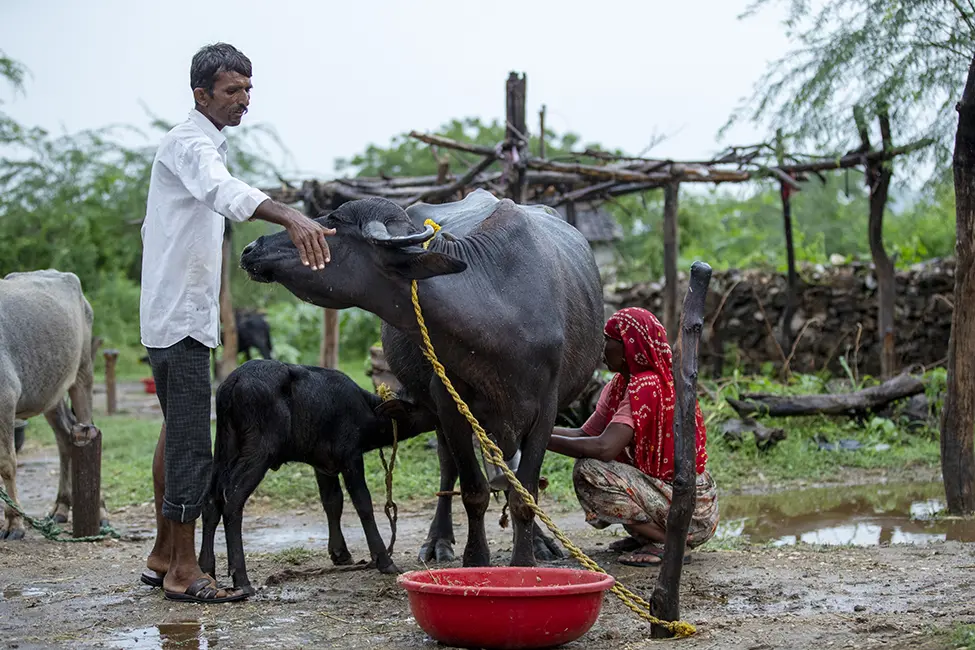
Amritlal also has the responsibility of taking care of both of his parents in their old age—his father is 98 and his mother 80, both barely mobile. Most of these responsibilities, along with all chores of the household, fall on Ganga Devi and the eldest daughter, Neema. When asked how she manages when her husband is away for months, Ganga Devi said, “This is how it is in our world. I had an idea that my life was going to be like this when I was getting married. All women know this.”
Like most Indian farmers, Amritlal’s way of showing care and love for his family is not through words, he just wants to be able to provide for all of them. “The number of people leaving the village to find work in cities has increased in front of my eyes. Everyone is going out, but there is a dearth of work in cities too,” he said.
But it is a choice they would rather not make.
One hot afternoon, Amritlal, his son and I were sitting in one of their fields. He was telling me that he’d like to stay close to his farm and family, but the erratic weather is constantly increasing the distance between them. Staring at his maize field, he said, “All farmers want to stay with their land. Tend to their fields, grow crops and live happily with their families, but it is not possible.”
This is the second installment in a series on climate change, livelihood and migration in India. Read the first story here.


